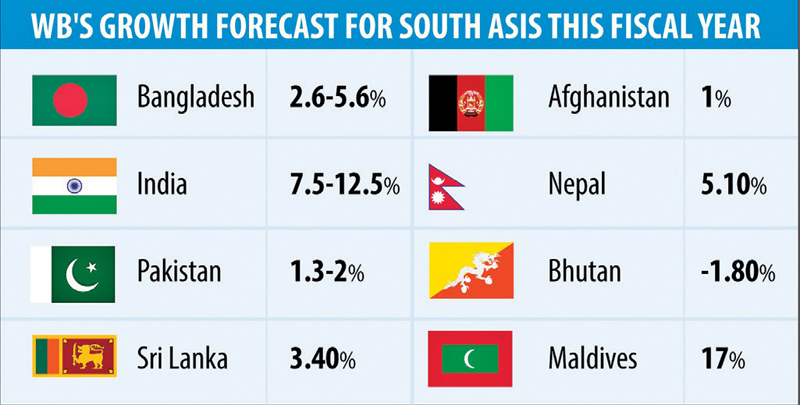The World Bank on Wednesday forecasted that the Bangladesh economy would grow between 2.6 per cent to 5.6 per cent in fiscal 2020-21 depending on the ongoing pace of the ongoing vaccination campaign, whether new restrictions to mobility are required and how quickly the world economy recovers.
Growth could very well be 3.6 per cent, which is much lower than the government’s target of 8.2 per cent.
But earlier in January, Prime Minister Sheikh Hasina said the GDP growth this fiscal year would be 7.4 per cent, which is close to the Asian Development Bank’s projection of 7.5 per cent.
“The COVID-19 pandemic impacted the economy profoundly,” said the Washington-based lender in its twice-a-year regional update.
A national shutdown from March to May 2020 resulted in severe supply-side disruptions in all sectors of the economy.
On the demand side, losses in employment income dampened consumption growth, although remittance inflows provided some buffer. The government’s COVID-19 stimulus programme provided firms with access to working capital and low-cost loans to sustain operations and maintain employee wages in fiscals 2019-20 and 2020-21.
From June onward, movement restrictions have been progressively lifted, and transit and workplace movement patterns returned to pre-pandemic levels by October. Officially recorded infections peaked in July 2020 and declined gradually in subsequent months.
Downside risks to the outlook are likely to persist if new waves of COVID-19 re-emerge in Bangladesh or its trading partner countries.
Bangladesh’s expected graduation from the UN’s Least Developed Country status in coming years will present opportunities but also challenges, including the eventual loss of preferential access to advanced economy markets.
Fiscal risks include weak domestic revenue growth (if tax reforms are delayed) and higher expenditure for COVID-19 vaccinations (if external financing is limited) and for supporting the Rohingya refugees (if donor fatigue sets in).
While external demand for garment appears to be stabilising, the recovery is fragile and could be vulnerable to new waves of COVID-19 infections.
Demand for Bangladesh’s overseas workforce in the Gulf region may also be impacted by the ongoing recession in that region, impairing future remittance inflows.


